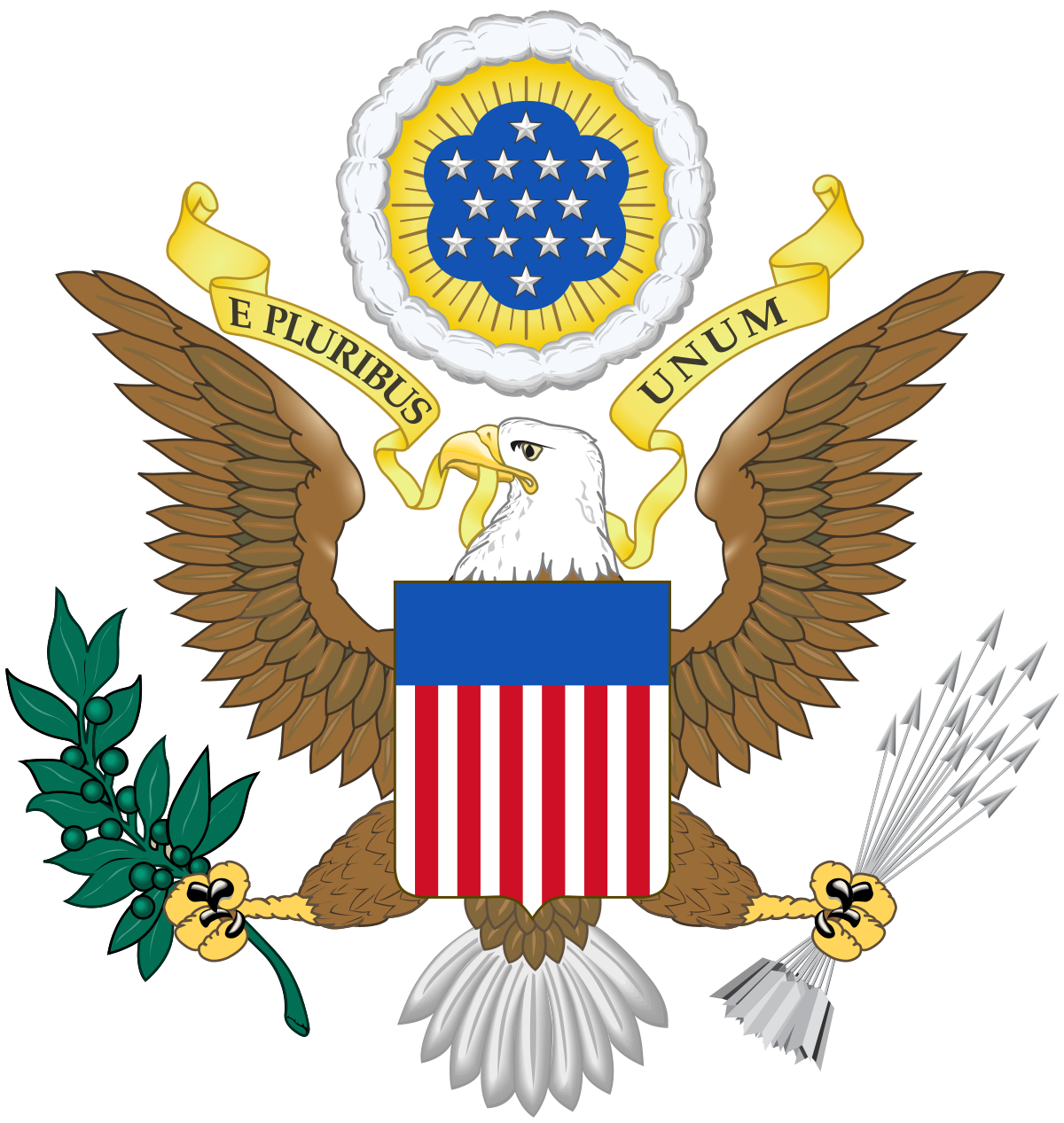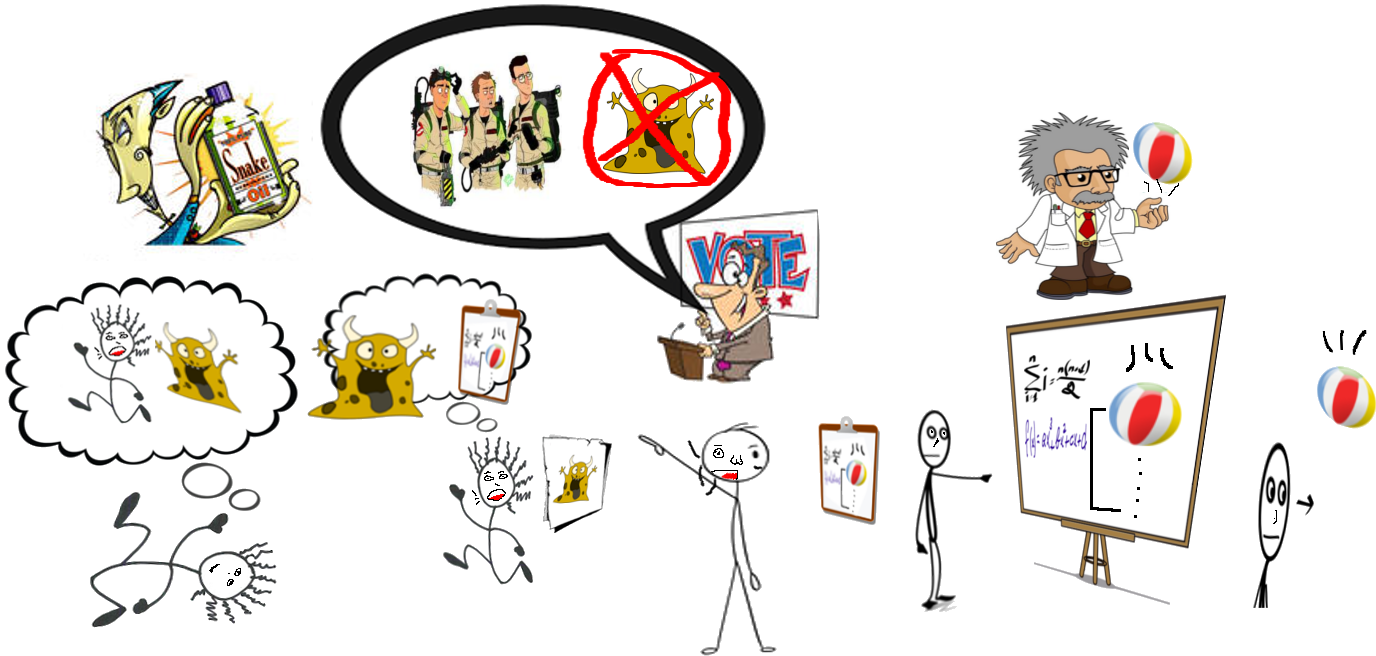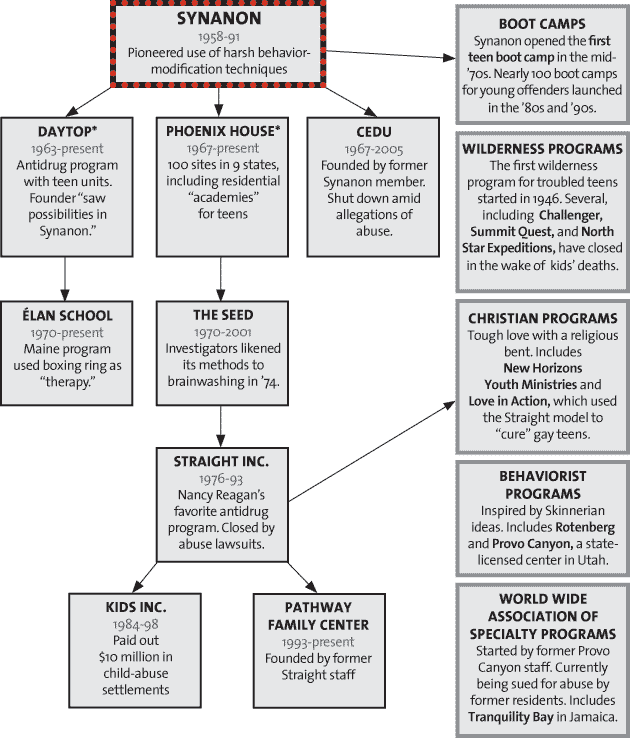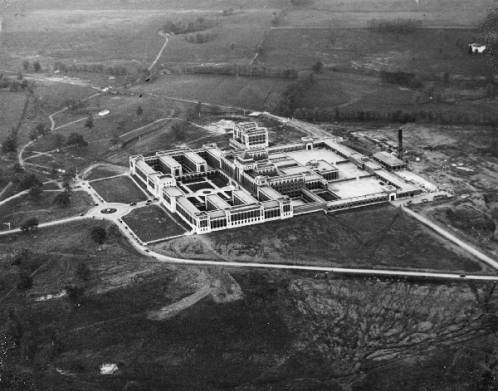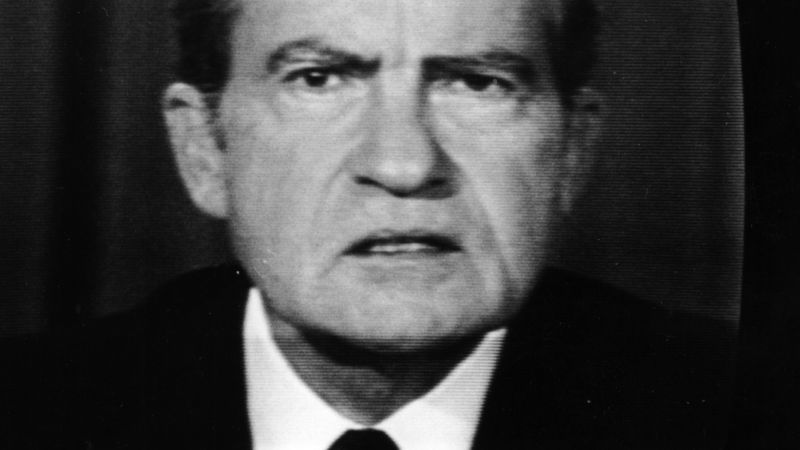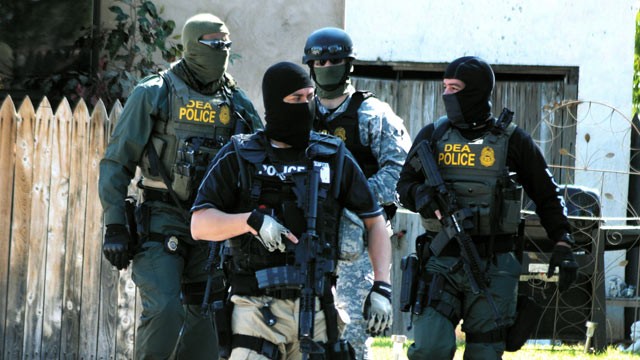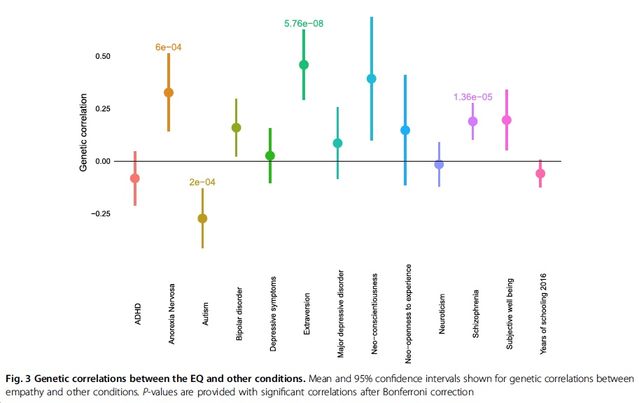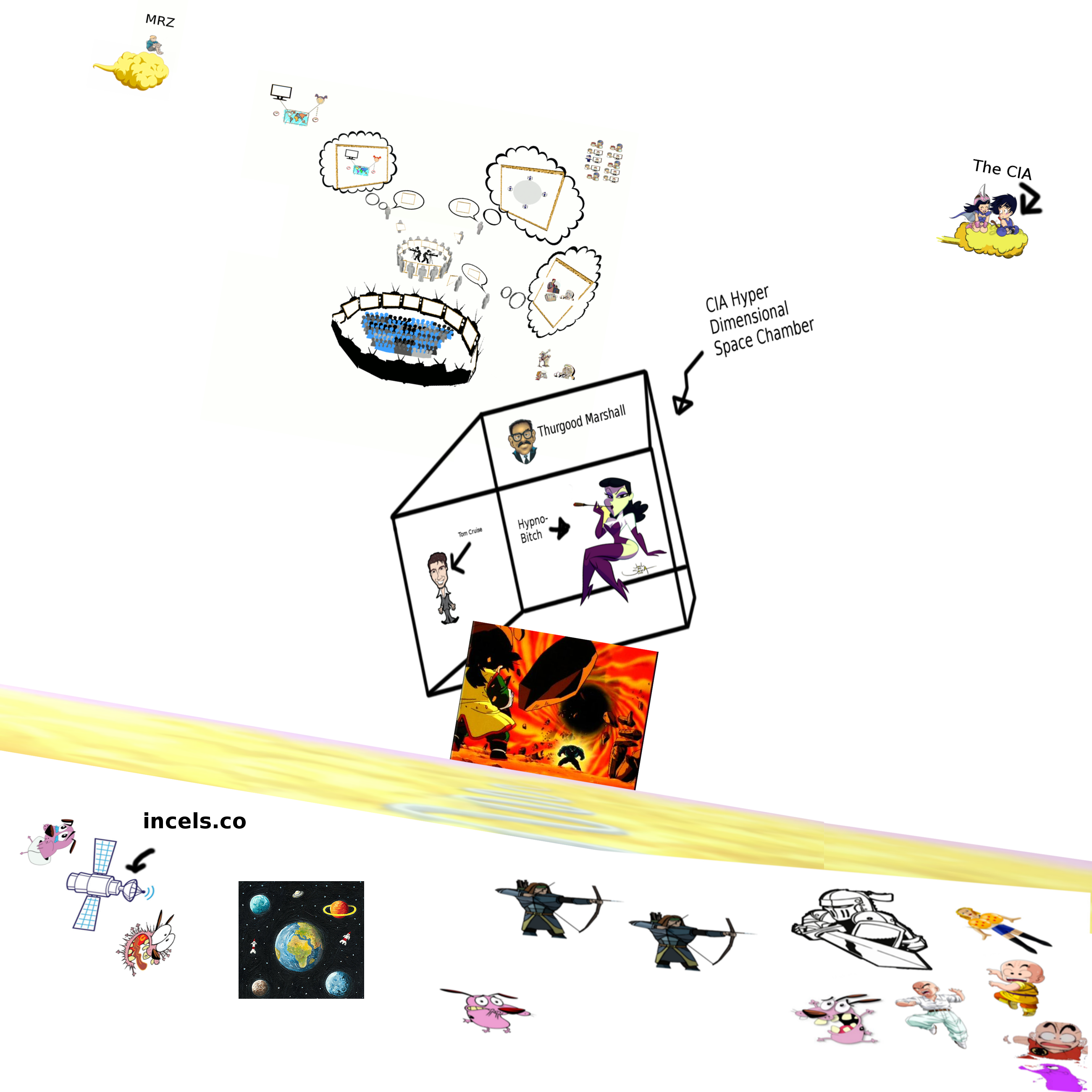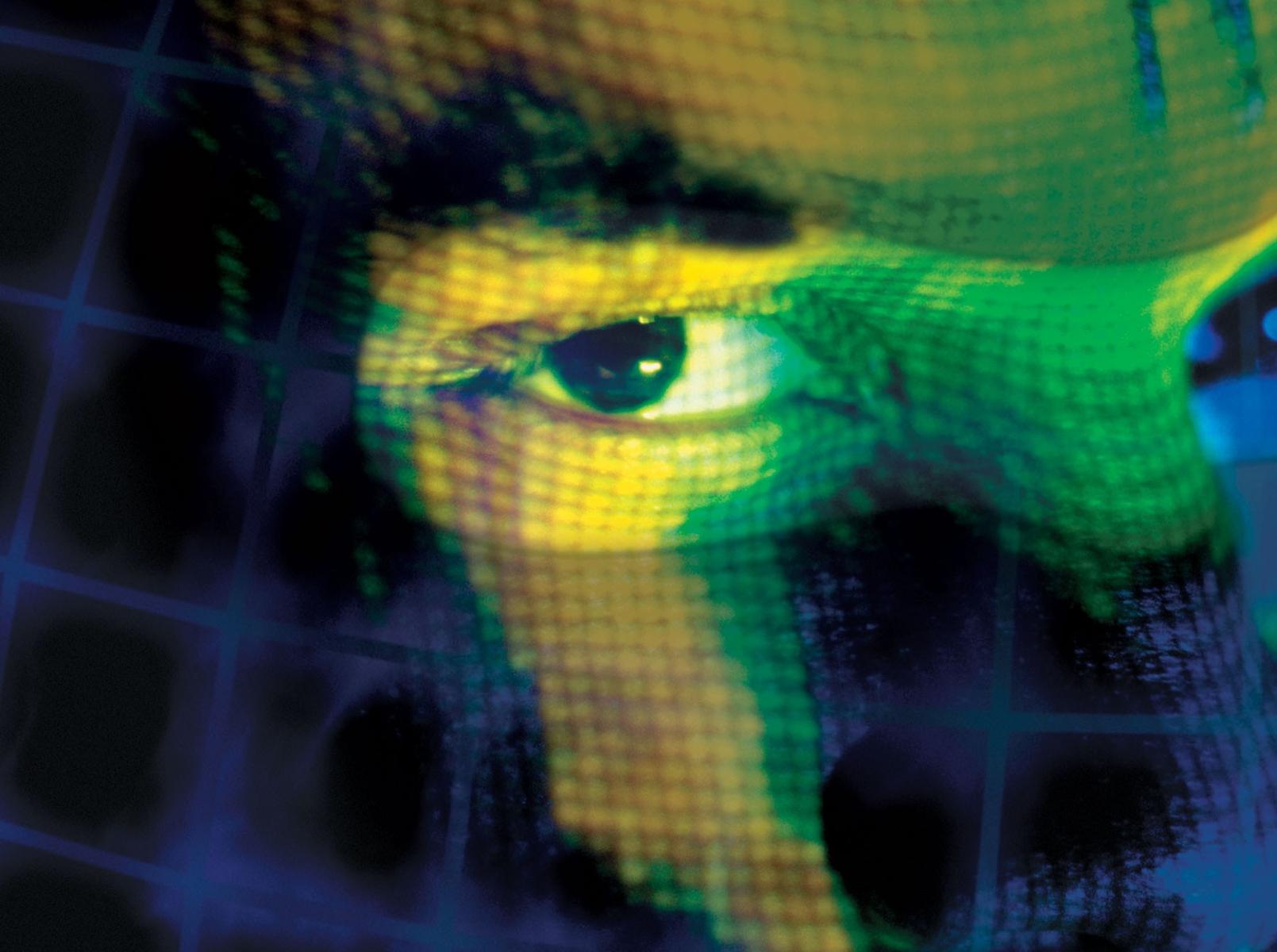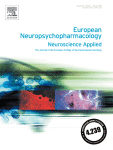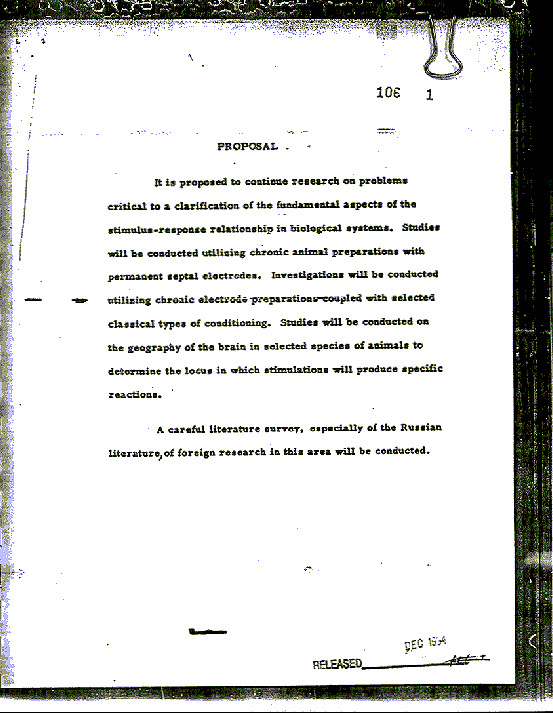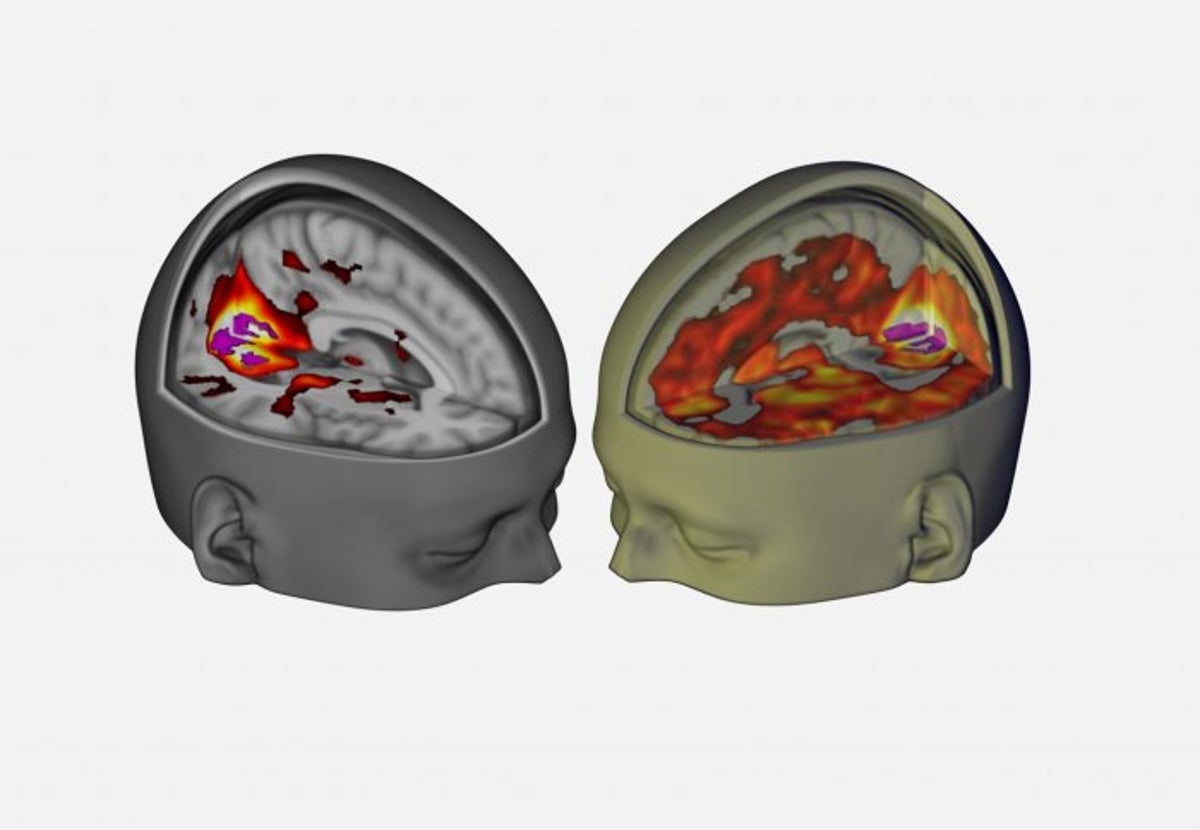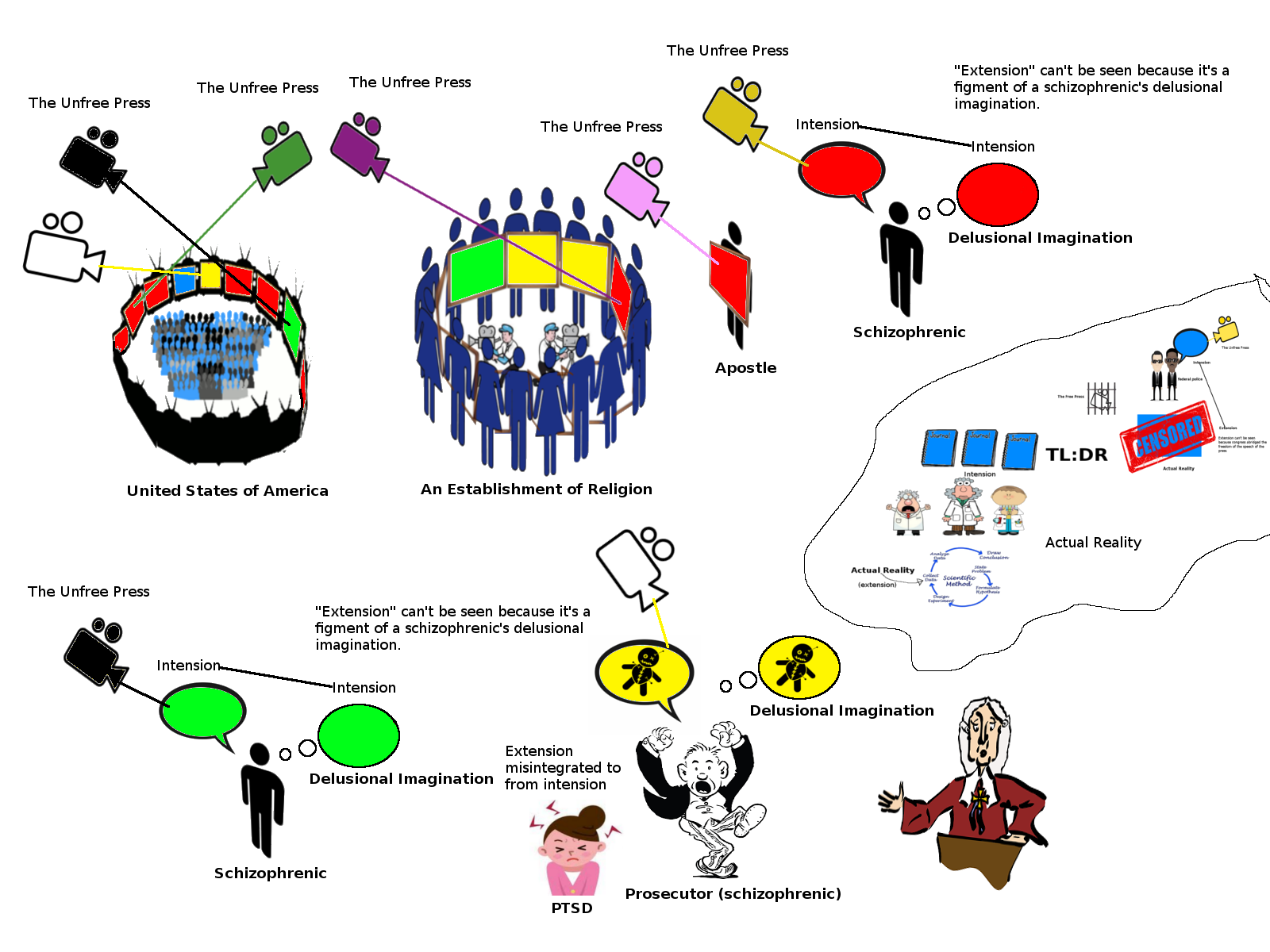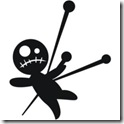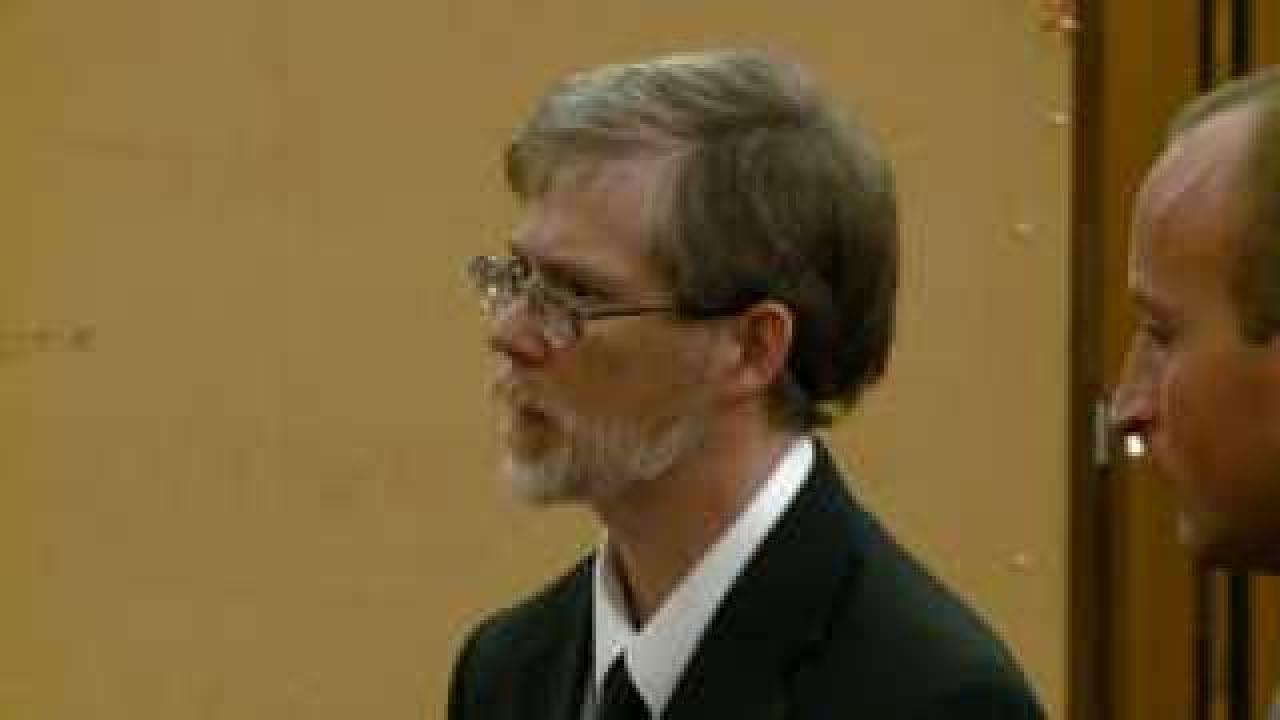Sorry regarding the double post; I was counting on at least one reply prior to making this one. I try to minimize double posting as much as possible now, but please if you can just merge this into the previous post instead of deleting it. I would have myself, but was in the unfortunate situation of the time to do so expiring before I finished this one, yet nobody making another post in the between period, and found this more acceptable than making another thread to discuss the same matter.
This technique is the one that I originally uncovered -- as I did via my research regarding the autism-psychosis hypothesis eventually recreating nearly everything for it. Then I had a stroke of luck that gave me the insight into the MKUltra technique once I identified the CIA relation to the matters I was studying by realizing Dr. Densen-Gerber operated a Synanon derivative, and wondering why I would have ended up at MKUltra, having not imagined I would. Then I had the insight into why I did. That little tiny error -- making that public knowledge -- in an offhand comment in a book of hers was enough for me to essentially times a million my intelligence insight into the operations of the CIA within the next few weeks. I didn't even realize the CIA was ultimately responsible for the various issues I was having, nor did I realize that they were all related to exactly the same group for that matter. Some would likely consider me gathering intelligence on such matters as seemingly almost treasonous; however, when it comes to such matters I hardly can imagine the CIA as having the audacity to feign a moral high ground, given the ease with which we would fall into a -- quite prolonged -- game of rubber and glue, or black pots and kettles. On one hand, our courts will probably agree with them. On the other hand, they've most likely hypnotized our courts into carrying out their arbitrary bidding, as well as certainly did so first.
First I linked them together by the offhand comment Dr. Densen-Gerber made in a journal article / book, identifying her rehab as a Synanon derivative. Amazingly, after that simple little discovery, I had a huge volume of information just integrate itself into a still somewhat rapidly expanding narrative that clearly describes the operations of the CIA particularly during the 1960s to 1980s, after which I lose insight into anything regarding them, even as their original abominations I've insight into are still alive and functional.
Technique One: Teach friends science such that they teach enemies establishments of religion
The tiny article inside The Washington Post on Jan. 13, 1979, read like something from a cartoonishly sinister spy show: “CIA documents released yesterday show the agency once considered using drugs, shock treatments and even removal of parts of the brain to ‘dispose of blown agents, exploited defectors and defecting trainees.’”
Is the graphical overview, the textual explanation of which is somewhat involved. The general circular pattern around the cameras is straight from Netwar theory (both because of being "swarming" like and "go" like).
The emergence of netwar implies a need to rethink strategy and doctrine, since traditional notions of war as a sequential process based on massing, maneuvering, and fighting will likely prove inadequate to cope with a nonlinear landscape of conflict in which societal and military elements are closely intermingled. In our view, traditional warfare fits the Western paradigm symbolized by chess, where territory is very important, units are functionally specialized, and operations proceed sequentially until checkmate. Netwar, however, requires a new analytic paradigm, which, we argue, is provided by the Oriental game of Go, where there are no "fronts," offense and defense are often blurred, and fortifications and massing simply provide targets for implosive attacks. Victory is achieved not by checkmate, as there is no king to decapitate, but by gaining control of a greater amount of the "battlespace."

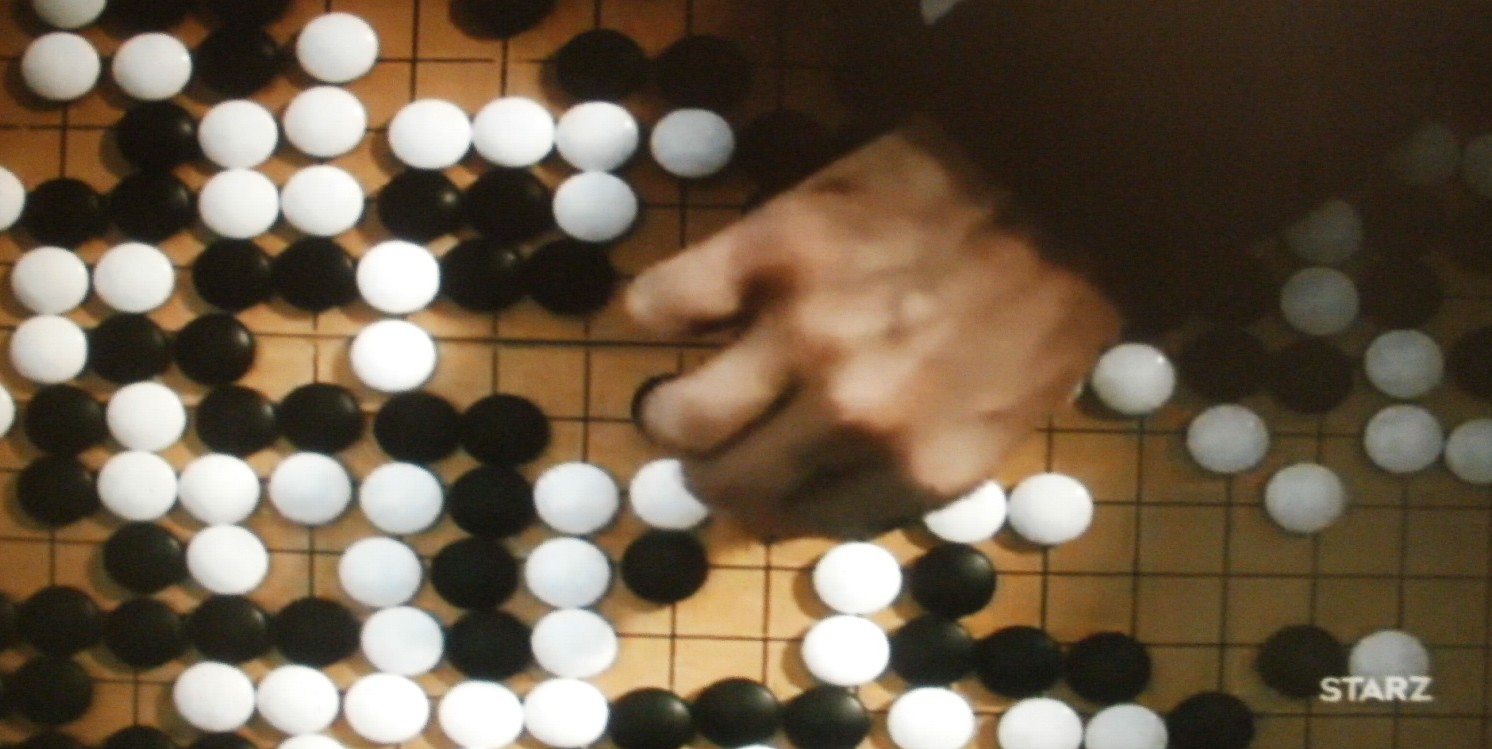
In terms of implications for policy, we argue that forming networks to fight networks and decentralizing operational decisionmaking authority will likely improve the ability of the United States to combat transnational crime and terrorism and to counter the proliferation efforts of rogue states and their nonstate support networks.
The concepts of cyberwar and netwar encompass a new spectrum of conflict emerging in the wake of the information revolution. To confront this type of conflict, it is crucial for governments, military, and law enforcement to begin networking themselves.

www.rand.org
Networks and Netwars
The Future of Terror, Crime, and Militancy
The concepts of cyberwar and netwar encompass a new spectrum of conflict that is emerging in the wake of the information revolution. Netwar includes conflicts waged, on the one hand, by terrorists, criminals, gangs, and ethnic extremists; and by civil-society activists (such as cyber activists or WTO protestors) on the other. What distinguishes netwar is the networked organizational structure of its practitioners — with many groups actually being leaderless — and their quickness in coming together in swarming attacks. To confront this new type of conflict, it is crucial for governments, military, and law enforcement to begin networking themselves

en.wikipedia.org
They define swarming, in a military context, as "...seemingly amorphous, but it is a deliberately structured, coordinated, strategic way to strike from all directions, by means of a sustainable pulsing of force and/or fire, close-in as well as from stand-off positions."
A recent example of swarming can be found in Mexico, at the level of what we call activist “social netwar” (see Ronfeldt et al., 1998)
Networks, as opposed to institutions, are shaped by decentralized command and control structures, are resistant to “decapitation” attacks targeting leaders, and are amorphous enough to weld together coalitions with significantly different agendas while concentrating forces on a single symbolic target.
However, the most important part is the toggling mechanism between the TPN and the DMN, which is covered here:
Prior work has established that analytic thinking is associated with disbelief in God, whereas religious and spiritual beliefs have been positively linked to social and emotional cognition. However, social and emotional cognition can be subdivided into ...

www.ncbi.nlm.nih.gov
Finally, we have demonstrated that attention to engaging social stimuli not only activates the DMN but also deactivates the TPN. In a subsequent study[30] it was shown that this pattern of DMN activation and TPN deactivation was present for humanizing depictions of individuals, whereas dehumanizing depictions, which are associated with decreased moral concern, either involved decreased activity in the DMN or increased activity in the TPN. Taken together, these findings suggest that we are neurologically constrained from simultaneously exercising moral concern and analytic thinking.
The conflict between science and religion may have its origins in the structure of our brains. To believe in a supernatural god or universal spirit, people appear to suppress the brain network used for analytical thinking and engage the empathetic network. When thinking analytically about the...
www.sciencedaily.com
"These findings," Friedman continued, "are consistent with the philosophical view, espoused by (Immanuel) Kant, according to which there are two distinct types of truth: empirical and moral."
Semantic Scholar extracted view of "fMRI reveals reciprocal inhibition between social and physical cognitive domains" by A. Jack et al.

pdfs.semanticscholar.org
System 1 has been variously characterized as 'intuitive', 'emotion-driven' and 'experiential'; whereas System 2 has been characterized as, 'controlled', 'rule-based', 'rational' and 'analytic'. We know of two lines of work which link cognitive neuroscience to this classical form of dual process theory:one which looks at logical reasoning (Goel and Dolan, 2003), the other moral judgments (Greene et al., 2004). Both identify areas in the DMN and TPN associated with System 1 and System 2 reasoning respectively. Hence, the link between dual-process theories of cognition and the DMN vs.TPN dichotomy appears worthy of further investigation.
Two studies examine the personality characteristics that drive dogmatism in the religious and nonreligious. In both groups, higher critical reasoning skills were associated with lower levels of dogmatism. But these two groups diverge in how moral concern influences their dogmatic thinking.
www.sciencedaily.com
The researchers say the results of the surveys lend further support to their earlier work showing people have two brain networks -- one for empathy and one for analytic thinking -- that are in tension with each other. In healthy people, their thought process cycles between the two, choosing the appropriate network for different issues they consider.
But in the religious dogmatist's mind, the empathetic network appears to dominate while in the nonreligious dogmatist's mind, the analytic network appears to rule.
Essentially, as a HUMINT agency interested in protecting secret information from interrogation,

en.wikipedia.org
Interrogation
As opposed to debriefing, the subject of interrogation is not necessarily cooperating with the obtaining of information by the organization. The subject is normally in custody, although the legal circumstances may be such that an uncooperative subject may be able to leave. Examples of subjects being interrogated include POWs, individuals detained by patrol as not being from the area, and a thief arrested by the civilian police.
they have a vested interest in teaching the TPN science such that valid scientific work can be done, but in teaching the DMN a superficially similar seeming establishment of religion, and making compromise or defection the social trigger for DMN activation (and the concomitant TPN deactivation, given the anti-correlated nature of the two).
Prior work has established that analytic thinking is associated with disbelief in God, whereas religious and spiritual beliefs have been positively linked to social and emotional cognition. However, social and emotional cognition can be subdivided into a number of distinct dimensions, and some...

journals.plos.org
Engaging social stimuli are associated with activation of the DMN and deactivation of the TPN, whereas analytic problems are associated with activation of the TPN and deactivation of the DMN.
The TPN and DMN dichotomy is possible to see in practice via various experiment. For example,
Request PDF on ResearchGate | Hebephilia: Quintessence of Diagnostic Pretextuality | Hebephilia is an archaic term used to describe adult sexual attraction to adolescents. Prior to the advent of contemporary sexually violent predator laws, the term was not found in any dictionary or formal...

www.researchgate.net
In a subsequent study, Freund confirmed the normalcy of sexual arousal to adolescents. His subjects were 48 young Czech soldiers, all presumed to be ‘‘normal’’ and heterosexual in orientation. He showed the men pictures of children (ages 4–10 years old), adolescents (ages 12–16), and adults (ages 17–36). As expected, most of the heterosexual men were sexually aroused by photos of both adult and adolescent females. They were not aroused by pictures of males of any age, and were aroused at an intermediate level by pictures of children (Freund & Costell, 1970).
Bennett, P.; Lowe, R.; Petrova, H. (2015). “Heterosexual Men’s Ratings of Sexual Attractiveness of Adolescent Girls: A Cross-Cultural Analysis,” Archives of Sexual Behavior, in press. A…

philiaresearch.wordpress.com
A new study of Bulgarian men has replicated a previous 2013 experiment on British men. In both studies, the same photographs of adolescent girls (Tanner stages 3-4) were shown to one group of men labelled as age 14-15, and a different set of men labelled as age 16-17. Subjects reported more sexual attraction when the photographs were labelled as 16-17. The researchers conclude:
[T]he consistent finding that the same photographs of younger females, but with different age labels, were assigned significantly different levels of attractiveness suggests that cognitive factors beyond biologically driven sexual attraction were involved in making these ratings. In all the three samples, apparently younger girls were rated as less attractive than older girls despite being the same photographs. We hypothesize that this difference reflects some self-censoring mechanism involved in making such judgments. This may involve a form of comparison between participants’ own sexual attraction to the individual girl and the likely social norms surrounding this judgment.
This finding has now been replicated across four samples, including one that is yet to be reported.

en.wikipedia.org
Conventional
The conventional level of moral reasoning is typical of adolescents and adults. To reason in a conventional way is to judge the morality of actions by comparing them to society's views and expectations. The conventional level consists of the third and fourth stages of moral development. Conventional morality is characterized by an acceptance of society's conventions concerning right and wrong. At this level an individual obeys rules and follows society's norms even when there are no consequences for obedience or disobedience. Adherence to rules and conventions is somewhat rigid, however, and a rule's appropriateness or fairness is seldom questioned.[7][8][9]
A stellar and clear cut example of a distinction between a "moral" and empirical truth. The empirical truth is that penile blood volume increases in response to photographs of attractive adolescents, at least for a substantial number of men. However, the truth they state regarding their arousal level is contingent on the purported ages of the female in question, instead of being contingent on the arousing stimulus itself. We would ideally need to also have fmri and penile blood volume analysis to gain more insight into the matter, but I imagine that the purported age of the female is not having an actual effect on the penile blood volume. Brain imaging will almost certainly demonstrate activation of the TPN if the age isn't socioculturally "sensitive," and the DMN in the event that it is.
Still, we have seen no shortage of people who will argue until they are blue in the face regarding how this is essentially not the case, how they are not aroused by JBs at all even, and so on. I mean, if you have been online you have likely read such people's commentary, and yet can likely imagine that they may say something different if they were not triggered into activating their DMNs.
It's the same with traditional religion. People activate their TPN when they are analyzing the religions of others; however, they analyze their own religious materials with their DMNs instead, for their own materials are socioculturally pertinent to them.
By Bill McKeever Can a decapitated body lift itself up and gasp for breath? A story in the Book of Mormon seems to say so. The story is found in the Book of Ether and recounts a sword fight between a Jaredite king named Coriantumr (Ether 12:1) and Shiz, the brother of Lib (Ether 14:17).

www.mrm.org
Can a decapitated body lift itself up and gasp for breath? The Book of Mormon seems to say so. The story is found in the Book of Ether and recounts a sword fight between a Jaredite king named Coriantumr (Ether 12:1) and Shiz, the brother of Lib (Ether 14:17).
As the story goes, Lib was killed in a battle with Coriantumr’s army. As a result, Shiz followed Coriantumr in vengeful pursuit, burning cities and killing women and children along the way. Finally the two armies met near the seashore and gave battle for three days. After the third battle, Shiz wounded Coriantumr with “many deep wounds,” and he had to be “carried away as though he were dead.”
After recovering from his wounds, Coriantumr began to feel bad over the fact that “there had been slain two millions of mighty men, and also their wives and their children.” He attempted to make peace with Shiz, but Shiz agreed only if he would be allowed to kill Coriantumr with his own sword. Well, this only infuriated Coriantumr’s people, and so the fighting started all over again.
Eventually the armies meet. For several days men, women, and children fight relentlessly until only Coriantumr and Shiz remain. Ether 15:29 states that in the course of the battle, “Shiz had fainted with the loss of blood.” Taking advantage of the situation, Coriantumr took his sword and “smote off the head of Shiz.” But that isn’t the end. Verse 31 reports that “after he had smitten off the head of Shiz, that Shiz raised upon his hands and fell; and after that he had struggled for breath, he died.” The question is, how can a man without a head raise himself and also struggle for breath?
Learn the meaning of the story of Jonah and the Whale, which records one of the strangest events in the Bible. It's lessons are larger than life.

www.thoughtco.com
Jonah was in the giant fish three days. God commanded the whale, and it vomited the reluctant prophet onto dry land. This time Jonah obeyed God. He walked through Nineveh proclaiming that in forty days the city would be destroyed. Surprisingly, the Ninevites believed Jonah's message and repented, wearing sackcloth and covering themselves in ashes.
So, those examples should clarify some the disparity between TPN and DMN activation. And again, keep in mind that they are anti-correlated, such that a degree of activation of one causes about an equivalent deactivation of the other. So, upon conditioning the brain of a subject to a toggling trigger, they can cause that trigger to determine which of the large scale brain networks is accessed. Making the trigger being compromised or defecting to the enemy, or something that permeates the enemy or state of being captured, will at the very least impair the ability of anyone to give valuable information, and in the best case could result in people teaching the enemy an establishment of religion, with cognitive anosognosia into doing so -- such that they imagine themselves to be teaching the enemy a valid science, and even the science they learned themselves and do indeed know, but are rendered incapable of accessing by the environmental stimulus they were conditioned into toggling regarding (e.g., a Russian accent, or the topic of Socialism). They instead access their default mode network, which was taught an establishment of religion, but because of the concomitant cognitive anosognosia of activating the DMN and therefore losing activation of the TPN, having impaired insight into this even being the case.
Objective: Poor insight is a cardinal symptom of schizophrenia that, while not universally and uniformly expressed in all patients, is among the most common of its manifestations. Available neurobiological and neurocognitive evidence linking the phenomenon ...

www.ncbi.nlm.nih.gov
There are self-administered, validated tools as well, such as the Beck Cognitive Insight Scale (BCIS),11 which is based on a separation of the concepts of “cognitive insight” and “clinical insight.” Clinical insight is described as the awareness of mental illness requiring treatment, while cognitive insight encompasses the patient’s ability to evaluate, reappraise, and modify distorted beliefs or misperceptions. These interpretations are regulated at a “higher level” of cognition, also called metacognition, allowing clinicians to assess self-regulating and self-monitoring functions of thought processes. The BCIS assesses a patient’s objectivity about delusional thinking, previous errors, reattribution of false explanations, and ability to receive corrective information from others. It includes self-reflectiveness and self-certainty subscales in order to measure willingness and capacity to entertain alternate explanations and over-confidence in validity of beliefs.
Conclusions
In conclusion, recent EEG and neuroimaging research shows that regions that have been related to psychotic insight deficits are highly activated in lucid compared to non-lucid dreaming. This fact empirically substantiates the analogy between the metacognitive impairments in psychosis and non-lucid dreaming. While research into lucid dreaming is currently limited by the rarity of the phenomenon, metacognitive training or other lucid dreaming induction methods might lead to new therapeutic approaches by improving insight in psychosis. Lucid dreaming therefore transforms the dreaming psychosis model from an interesting idea with a long history into a testable scientific hypothesis and a promising new therapeutic approach.
To summarize, the empirical findings reviewed here constitute neurobiological evidence of the theoretical idea that dreaming indeed might serve as a model of psychosis: cortical, in particular prefrontal, medial parietal and inferior temporal regions that are linked to insight problems in psychosis show striking overlap with brain regions in which activation increases during dreaming are associated with the gain of insight into the current state of mind (see Fig. 3). From a network point of view, schizophrenia patients show disconnectivity within the frontoparietal network and stronger connectivity within the default mode network [79,80], with the exception of default mode network regions implicated in self-referential processing, within which patients with poor insight show decreased connectivity [56].
Prefrontal and pa-rietal regions are involved in most higher cognitive processes like intelligence or working memory [43], in particular the dorsolateral prefrontal cortex has been associated with metacognitive evalua-tion[44,45]. The precuneus has been proposed to be the pivotal region involved in self-referential processing [46]. The fronto-parietal activation pattern observed during lucid REM sleep therefore nicely mirrors the reinstantiation of reflective capabilities experienced during lucid dreaming. In contrast to the default mode network-like activation patterns of normal REM sleep [41] , brain regions activated during lucid dreaming comprise substantial parts of the frontoparietal control network [35]. This network has been postulated to integrate information coming from both the default mode and attention networks by switching between competing internally and externally directed processes[47]. Due to this role as a kind of meta-network, the frontoparietal control network might be seen as an ideal candidate subserving processes of metacogni-tion like dream lucidity[48].
Objective: Poor insight is a cardinal symptom of schizophrenia that, while not universally and uniformly expressed in all patients, is among the most common of its manifestations. Available neurobiological and neurocognitive evidence linking the phenomenon ...

www.ncbi.nlm.nih.gov
The results showed a correlation between insight as measured by the BCIS self-reflectiveness index and lower gray matter volume in the right ventrolateral prefrontal cortex (VLPFC). The VLPFC is involved in working memory and decision making. The findings suggest that a reduced VLPFC volume corresponds with a diminished capacity to entertain alternative explanations about one’s misperceptions leading to impairment in awareness of illness.

en.wikipedia.org
The ventrolateral prefrontal cortex (vlPFC) is a subdivision of the prefrontal cortex. Its involvement in modulating existing behavior and emotional output given contextual demands has been studied extensively using cognitive reappraisal studies and emotion-attention tasks. Cognitive reappraisal studies indicate the vlFPC’s role in reinterpreting stimuli, and reducing or augmenting responses. Studies using emotion-attention tasks demonstrate the vlFPC’s function in ignoring emotional distractions while the brain is engaged in performing other tasks.[6]
Systematic Review of Mindfulness Induced Neuroplasticity in Adults: Potential Areas of Interest for the Maturing Adolescent Brain, Virginie Kirk, Chariklei

childhood-developmental-disorders.imedpub.com
Prefrontal activation in the dlPFC and vlPFC was also associated with deactivation in the DMN, during experiential focus and without previous training [24]. The engagement of prefrontal areas seems concomitant to the disengagement of limbic and DMN systems.
In major depressive disorder (MDD), the anterior cingulate cortex (ACC) has been associated with clinical outcome as well as with antidepressant treat…

www.europeanneuropsychopharmacology.com
IPC and VLPFC belong to the ventral attentional network that supports attentional filtering and reorienting towards the environment (Corbetta et al., 2008), and is anti-correlated with the preACC/DMN, involved in self- referential processes ( Fox and Raichle, 2007).

en.wikipedia.org
A recent theory by Jane Risen proposes that superstitions are intuitions that people acknowledge to be wrong, but acquiesce to rather than correct when they arise as the intuitive assessment of a situation. Her theory draws on dual-process models of reasoning. In this view, superstitions are the output of "System 1" reasoning that are not corrected even when caught by "System 2".[17]
Diderot's Encyclopédie defines superstition as "any excess of religion in general", and links it specifically with paganism.[11]
Semantic Scholar extracted view of "fMRI reveals reciprocal inhibition between social and physical cognitive domains" by A. Jack et al.

pdfs.semanticscholar.org
Both identify areas in the DMN and TPN associated with System 1 and System 2 reasoning respectively.
The conflict between science and religion may have its origins in the structure of our brains. To believe in a supernatural god or universal spirit, people appear to suppress the brain network used for analytical thinking and engage the empathetic network. When thinking analytically about the...
www.sciencedaily.com
"When there's a question of faith, from the analytic point of view, it may seem absurd," said Tony Jack, who led the research. "But, from what we understand about the brain, the leap of faith to belief in the supernatural amounts to pushing aside the critical/analytical way of thinking to help us achieve greater social and emotional insight."
Two studies examine the personality characteristics that drive dogmatism in the religious and nonreligious. In both groups, higher critical reasoning skills were associated with lower levels of dogmatism. But these two groups diverge in how moral concern influences their dogmatic thinking.
www.sciencedaily.com
"It suggests that religious individuals may cling to certain beliefs, especially those which seem at odds with analytic reasoning, because those beliefs resonate with their moral sentiments," said Jared Friedman, a PhD student in organizational behavior and co-author of the studies.
"Emotional resonance helps religious people to feel more certain -- the more moral correctness they see in something, the more it affirms their thinking," said Anthony Jack, associate professor of philosophy and co-author of the research. "In contrast, moral concerns make nonreligious people feel less certain."
An astonishing feat, and decades ahead of its time. Only recently did modern neuroscience, pharmacology, and the like, even bring us to the understanding that this was possible.
Increasing preclinical and clinical evidence underscores the strong and rapid antidepressant properties of the glutamate-modulating NMDA receptor antagonist ketamine. Targeting the glutamatergic system might thus provide a novel molecular strategy for antidepressant treatment. Since glutamate is...

www.ncbi.nlm.nih.gov
A prominent feature of the human brain's global architecture is the anticorrelation of default-mode vs. task-positive systems. Here,we show that administration of an NMDA glutamate receptor antagonist, ketamine, disrupted the reciprocal relationship between these systems in terms of task-dependent activation and connectivity during performance of delayed working memory. Furthermore, the degree of this disruption predicted task performance and transiently evoked symptoms characteristic of schizophrenia.
Consequence: Strengthening of drug war -- negative for satellites, for we make common use of drugs as nuptial gifts, whereas guarders are less inclined toward them because of being more reputation oriented, even as there is still widespread use of such things in many guarder communities.
Humans, unlike most other species, show intense interest in the activities of conspecifics, even when the activities in question pose no obvious fitness threat or opportunity. Here, we investigate one content domain in which people show substantial interest, ...

www.ncbi.nlm.nih.gov
In our view, efforts to limit recreational drug usage flow in large part from attempts by committed reproductive strategists to reduce levels of sexual promiscuity because promiscuity interferes with committed strategies.
Young Swiss men who say that they believe in God are less likely to smoke cigarettes or pot or take ecstasy pills than Swiss men of the same age group who describe themselves as atheists. Belief is a protective factor against addictive behaviour. This is the conclusion reached by a study funded...
www.sciencedaily.com
Young Swiss men who say that they believe in God are less likely to smoke cigarettes or pot or take ecstasy pills than Swiss men of the same age group who describe themselves as atheists. Belief is a protective factor against addictive behaviour. This is the conclusion reached by a study funded by the Swiss National Science Foundation.
Despite limited and ambiguous empirical data, substance use-related problems have been assumed to be rare among patients with autism spectrum disorders (ASD). Using Swedish population-based registers we identified 26,986 individuals diagnosed with ASD during 1973–2009, and their 96,557 non-ASD...

link.springer.com
Increased Risk for Substance Use-Related Problems in Autism Spectrum Disorders: A Population-Based Cohort Study
...
In summary, this large population-based study suggests that individuals with ASD have higher risk of substance use-related problems than population controls; most likely because of a shared familial liability for these conditions. An important implication of our findings concerns diagnostics and treatment strategies in ASD. Increased risk of substance-related problems in ASD suggests attention and preventive measures regarding substance use disorder in this population.

en.wikipedia.org
Early CIA efforts focused on LSD-25, which later came to dominate many of MKUltra's programs.[44] The CIA wanted to know if they could make Soviet spies defect against their will and whether the Soviets could do the same to the CIA's own operatives.[45]
the use of LSD -- and other psychedelics -- risked disintegrating the DMNs of the population and inhibiting the effectiveness of such a technique, or otherwise giving insight into the underlying neurological mechanism at play.
Brain imaging suggests LSD’s consciousness-altering traits may work by hindering some brain networks and boosting overall connectivity

www.scientificamerican.com
Results from the studies suggest that LSD simultaneously creates hyper-connections across the brain, allowing the functions of seemingly unrelated regions of the organ to ooze into one another. At the same time, the drug apparently chips away at organization within networks—including a system the brain defers to at rest called the default mode network, which normally governs functions such as self-reflection, autobiographical memory and mental “time travel.”
Members of the team reporting in Current Biology suspect that the default mode network disintegration, coupled with dampened electrical activity in consciousness-related alpha brain waves, contributes to a temporary loss of a sense of self in some psychedelic drug users, who often describe feeling at one with others and the world around them—an effect scientists call “ego dissolution.”
Not only could LSD use disintegrate the DMN, but it could cause simultaneous TPN and DMN regions to activate that otherwise typically wouldn't, which could give a phenomenological insight into their underlying neurological mechanism. Ergo, they organized an LSD related moral panic and coupled fraudulent research.
A brief description of the erroneous science bubble that occurred around the issue of LSD causing chromosome damage between 1967 and 1971
erowid.org
The Albert Hofmann collection contains nearly seventy articles on the topic of whether or not LSD-25 causes "chromosome damage". These articles are a good example of the scientific and cultural moral panic that took place in the late 1960s and early 1970s.
In 1967, Science published an article, based on the examination of a single patient, which proposed that LSD caused chromosome breakage.1 As Peter Stafford notes in Psychedelics Encyclopedia, "By evening, the charge that LSD could break chromosomes was in all the nation's media."
Between 1967 and 1972, article after article was published, in respected peer-reviewed journals, describing the link between LSD and chromosomal damage, both in vitro and in users and their offspring. As these reports accumulated, popular media amplified the scare, leading to sensational articles decrying the mutations that would be unleashed on future generations.
"New research finds [LSD] is causing genetic damage that poses a threat of havoc now and appalling abnormalities for generations yet unborn."2
Yet, by the mid-1970s, the tide had turned and the scientific literature generally supported the revised opinion that LSD does not cause chromosomal breakage or birth defects.
How was it possible for this issue to progress as far as it did? In an atmosphere friendly to reports of negative consequences of LSD use, a litany of elementary scientific and research errors were ignored by the journals that published the findings. It wasn't until enough research could be conducted to counteract the initial momentum that saner opinions, and better science, prevailed.
In the collection is a copy of one of the key articles that helped end the hysteria that was taking place in peer reviewed journals and the media. The authors conclude that:
"From our own work and from a review of the literature, we believe that pure LSD ingested in moderate doses does not damage chromosomes in vivo, does not cause detectable genetic damage, and is not a teratogen or a carcinogen in man. Within these bounds, therefore, we suggest that, other than during pregnancy, there is no present contraindication to the continued controlled experimental use of pure LSD."3
The progression of this issue and its related articles is a perfect example of how dozens of journal references supporting one position may still be wrong. In many cases, only time and the evolution of knowledge can sort it out.
It would be interesting to read a retrospective on this part of psychedelic research history.
as well as entirely switched their drug war engine over the MKUltra technique.

en.wikipedia.org
Prenatal cocaine exposure (PCE), theorized in the 1970s, occurs when a pregnant woman uses cocaine and thereby exposes her fetus to the drug. "Crack baby" was a term coined to describe children who were exposed to crack (freebase cocaine in smokable form) as fetuses; the concept of the crack baby emerged in the US during the 1980s and 1990s in the midst of a crack epidemic.[1] Other terms are "cocaine baby" and "crack kid". Early studies reported that people who had been exposed to crack in utero would be severely emotionally, mentally, and physically disabled; this belief became common in the scientific and lay communities.[1] Fears were widespread that a generation of crack babies were going to put severe strain on society and social services as they grew up. Later studies failed to substantiate the findings of earlier ones that PCE has severe disabling consequences; these earlier studies had been methodologically flawed (e.g. with small sample sizes and confounding factors). Scientists have come to understand that the findings of the early studies were vastly overstated and that most people who were exposed to cocaine in utero do not have disabilities.[1]

en.wikipedia.org
Type for-profit
Genre new religious movement

www.motherjones.com
The idea that punishment can be therapeutic is not unique to the Rotenberg Center. In fact, this notion is widespread among the hundreds of "emotional growth boarding schools," wilderness camps, and "tough love" antidrug programs that make up the billion-dollar teen residential treatment industry.
This harsh approach to helping troubled teens has a long and disturbing history. No fewer than 50 programs (though not the Rotenberg Center) can trace their treatment philosophy, directly or indirectly, to an antidrug cult called Synanon. Founded in 1958, Synanon sold itself as a cure for hardcore heroin addicts who could help each other by "breaking" new initiates with isolation, humiliation, hard labor, and sleep deprivation.

en.wikipedia.org
DFAF was founded by Betty Sembler, wife of shopping center developer and Ambassador Mel Sembler. In 1976, Betty and Mel Sembler founded the cult[4] Straight, Incorporated, a "coercive rehabilitation" program in the United States that produced hundreds of reports of abuse of adolescents and their families during its 15 years of existence. Straight was adapted from the controversial therapeutic community programs Synanon and The Seed.
A successful innovator in drug rehabilitation who was accused of financial irregularities

www.ncbi.nlm.nih.gov
In 1979 Densen-Gerber was the subject of a scathing profile in New York magazine, “The Mysterious Mistress of Odyssey House,” which said, “Most people think of Odyssey House as a solid, benevolent program... Dr Densen-Gerber... has also emerged as an influential spokeswoman for sexually abused children. Today, she has become a familiar figure at public forums and legislative functions, detailing the horrors of addiction and ill treated youngsters... The cameras whirr and the lawmakers reach for the handkerchiefs and appropriations [funds]. It's a good show... But there is another side to this tale...”
Naturally the technique employed in Odyssey's treatment is spelled out in exquisite bits. In essence it is a medical doctor's extension of the original Synanon method. Synanon eschewed 'the use of any medical doctors and just had their boarders kick "cold turkey" spurred on by the jeers and encouragements of ex-addicts who had gone through the same gauntlet. Odyssey is more sophisticated and noticeably better organized and run. It insists on complete and exacting urine checks on all members to make certain no drugs are being used. It has exacting in-take procedures and highly structured promotion levels and rewards. It has penetrating and demanding deep "probe" sessions that do emulate the early marathon Synanon ways, but here Utilize psychiatric methodology as opposed to street wisdom.
Ramirez set up the synanon-based Phoenix House which hired former Synanite Ted Dibble to manage one of its centers. Phoenix House is one of the biggest TCs today. Psychiatrist Dr. Judianne Densen-Gerber visited Dr. Ramirez in Puerto Rico and setup her own synanon-based TC in New York City called Odyssey House. Many entrepreneurs, previously excluded from the lucrative drug rehabilitation trade because of lack of a medical degree, have opened their own second, third, and fourth generation synanon-type therapeutic communities.
This is unprecedented, probably in the history of the United States," commented Dr. Judianne Densen-Gerber, a lawyer, psychiatrist and nationally prominent specialist on child abuse. ( Denson-Gerber is an MD who is thought to be a CIA asset Her husband was on the Warren Commission.) During her visit to Nebraska in December 1990 she said: 'If the children are not telling the truth, particularly if they have been abused, they need help, medical attention. You don't throw them in jail!'
Opened in 1935, the pastoral prison, rehab, and research center had a major impact on evidence-based practices today. This is a remarkable piece of history.

ireta.org
Over the years, the Narcotic Farm experimented with other treatment models, including Synanon. For more on that, see Points: the Blog of the Alcohol and Drugs History Society, Lessons from the Narcotic Farm, Part Five: Matrix House
ARC is also known for its involvement with the MK-ULTRA program (the CIA’s infamous mind-control drug experiments) during which the ARC director received CIA money for LSD research. It was after this scandal that ARC’s fate was sealed. On December 31, 1976, the last subject was transferred out of the lab.
Technique Two: Secretly place our bits in the available slots next to the most significant bits of naked JBs
Arguably this is what really fucked them, instead of Dr. Densen-Gerber discussing how her rehab facility was using a version of Synanon. As the undisputed king of the satellite males, it was all but certain that I would eventually come across whoever happened to currently be sticking their bits in naked JBs.
However, I hadn't the slightest clue that it was the CIA I would find myself competing against.

en.wikipedia.org
mage of a tree with a steganographically hidden image. The hidden image is revealed by removing all but the two least significant
bits of each
color component and a subsequent normalization. The hidden image is shown below.
Image of a cat extracted from the tree image above.
There is emerging evidence that individuals who are mentally ill are overrepresented in the group of defendants prosecuted under the blasphemy laws of Pakistan. This article discusses the background of blasphemy legislation in Pakistan, and proposes causal ...

www.ncbi.nlm.nih.gov
Blasphemy laws and mental illness in Pakistan
There is emerging evidence that individuals who are mentally ill are overrepresented in the group of defendants prosecuted under the blasphemy laws of Pakistan. This article discusses the background of blasphemy legislation in Pakistan, and proposes causal interactions between underlying mental illness in the defendant and prosecution for blasphemy. It sketches possible legal safeguards for such blasphemy defendants with mental illness in mental health legislation.
...
The entire spectrum of psychopathology lends itself to various behavioural infringements that could fall foul of the blasphemy laws in place in Pakistan. Individuals with psychotic disorders, such as mania and schizophrenia, can present symptoms of grandiose and bizarre delusional systems of being of divine origin, behavioural disinhibition and lack of insight, which place them at risk of prosecution under these laws. Individuals with autism, with varying degrees of intellectual disability, are another diagnostic group also at risk of not being able to follow social rules of due reverence and regard for what the community holds sacrosanct. Neurotic disorders such as obsessive-compulsive disorder can also create overbearing and compelling pressures on individuals to blaspheme in some instances, and this can have serious legal consequences if the targets of the blasphemy are revered by the community.
The association of mental illness and blasphemy allegations can also be more complex. Sexual abuse of vulnerable individuals with intellectual disabilities has on occasion been masked by allegations of blasphemy by abusers when they fear discovery. The lack of any legal protections for such vulnerable blasphemy defendants ensures that their testimony is extracted when they fear for their lives, and the sex abuse issue is concealed behind the allegations of blasphemy. In other cases, physical abuse can be an interacting factor, where the blasphemy allegations are raised against an individual with autism for example, when various attempts to physically discipline the individual have failed, and have, instead, resulted in severe physical injuries, which could lead to criminal prosecution against the abusers, unless blasphemy is raised as the reason why the discipline was implemented in the first place.
The most commonly cited criticism of the blasphemy laws is that they are used by the majority community to victimise religious minorities. Nevertheless, it is often the case that the person who is alleged to have committed the blasphemy has underlying vulnerabilities that explain why that person in particular stands so charged, and not others within the same disadvantaged community. The basis of this vulnerability can often be some form of mental illness. It is a separate matter whether this illness could benefit from treatment, but what is clear is that such individuals require some form of legal and social protections by virtue of their mental illness.

en.wikipedia.org
Blasphemy is the act of insulting or showing contempt or lack of reverence to a deity, or sacred things, or toward something considered sacred or inviolable.[1][2][3][4]
humanrightsfirst.org/wp-content/uploads/Blasphemy_Cases.pdf
Egypt: In December 2011, Masoud Abdullah was accused of posting on Facebook allegedly insulting and blasphemous pictures of the Prophet Muhammad.
Baha'i articles, books, translations, and historical materials

bahai-library.com
For Bahá'ís, the photograph of Bahá'u'lláh is very precious and it should not only be viewed but also handled with due reverence and respect, which is not the case here. Thus, it is indeed disturbing to Bahá'ís to have the image of Bahá'u'lláh treated in such a disrespectful way. However, as the creator of the site is not a Bahá'í, there is little, if anything, that can be done to address this matter. We hope these comments have been of assistance.
Terrorists may be using child pornography websites to exchange data, according to anti-terror experts.

www.telegraph.co.uk
Terrorists 'use child porn' to exchange information Terrorists may be using child pornography websites to exchange data, according to anti-terror experts.
Originally I agreed with this user who security expert Bruce Schneier quoted.
It’s the ultimate movie-plot threat: terrorists using child porn: It is thought Islamist extremists are concealing messages in digital images and audio, video or other files. Police are now investigating the link between terrorists and paedophilia in an attempt to unravel the system. It could...

www.schneier.com
Why would terrorists hide incriminating messages inside incriminating photographs? That would be like drug smugglers hiding kilos of cocaine in bales of marijuana.
Indeed. It is not terrorists who would hide incriminating messages in incriminating photographs; rather, it is the CIA that would construct a culturally blasphemous form of imagery in order to have a useful cover file for their top secret communications traveled by sneaker net by necessity.
Sneakernet is an informal term for the transfer of electronic information by physically moving media such as magnetic tape, floppy disks, optical discs, USB flash drives or external hard drives between computers, rather than transmitting it over a computer network.
CIA agents don't care if they are arrested with CP, for they can simply get a new undercover identity after this manifesting. If not, they simply accepted the risk of having such a job entailed that they may suffer in such a way by the failure of the operational procedures, and accepted this for the benefit of being able to transmit secret information outside of SCIFs in such a form that even a criminal would not allow enter into general circulation upon stealing.
Burglar steals video tapes of child abuse, hands them into police
I believe they most probably brainwashed the members of the supreme court into agreeing with the preposterous notion that the USA may have blasphemy legislation based on the scripture of a 20th century establishment of religion.
Dr Judianne Densen-Gerber, lawyer and psychiatrist who founded drug treatment program Odyssey House and went on to give widely quoted but sometimes disputed testimonyt on subjects like child abuse and pornography, dies at age 68; photo (M)

www.nytimes.com
A 1979 profile in New York magazine quoted Mayor Edward I. Koch as saying that she was ''one of those seminal forces, original, a go-getter.'' He said there were ''few people who can claim as many accomplishments.''
Dr. Densen-Gerber's success at getting government help became her downfall when the state investigated her use of public funds in the early 1980's and found irregularities. She resigned as executive director of Odyssey House in 1983, but remained active in affiliated programs.
Her influence extended to areas like child pornography. In 1977, her testimony that there were 264 monthly publications devoted to the subject helped persuade the House of Representatives to unanimously pass a bill to regulate it.
IPT, the publication of the Institute for Psychological Therapy, reported in 1992 that later government investigations proved her estimates to be exaggerated by ''several orders of magnitude.''
Dr. Densen-Gerber also commented on many other hot issues from a psychiatric point of view.
In 1991, she went to Omaha to testify in court that her interview with a man convinced her he had witnessed four satanic ritual killings. She characterized herself as an expert at deprogramming survivors of satanic cults.
ipt-forensics.com/journal/volume4/j4_2_1.htm
The Origin of the Myths
In 1976 Robin Lloyd, correspondent for NBC, published For Money or Love: Boy Prostitution in America (Out of Print)(Out of Print).18 In the book, for which a U.S. senator had written an introduction, Lloyd claimed that a huge network of prostitution involving 300,000 boys existed. The notion that child pornography trade is big business was initiated in this book. Yet, nowhere in the book is there any empirical basis for the number 300,000. Indeed, Lloyd admitted that it was a working hypothesis which he had suggested to a number of experts to test their reactions.19 This didn't prevent Judianne Densen-Gerber, director of Odyssey House, a chain of residential treatment clinics for drug addicts, from taking over the figure as if it represented a reliable statistic. She set about to mobilize public opinion against child pornography to which, she said, Lloyd had alerted her.
The media followed the stories of child exploitation in detail. In the national periodicals during 1977 nine articles appeared.20 The New York Times, a paper known to avoid sensationalism, printed 27 articles that year compared to one in the two years before. When in May, 1977 the highly popular television series Sixty Minutes devoted a program to child pornography, a tidal wave of letters to politicians resulted.21 That spring a subcommittee of the Committee on the Judiciary of the House of Representatives held a series of hearings on the subject which lasted until autumn, keeping child pornography in the news in the U.S.A. A platform was established by crusaders against child pornography, and in the prevailing climate of moral panic their cries for stronger measures received wide political support.
The chairman of the committee was Representative John Conyers Jr., who had organized the hearings to pass judgment on the proposal of Representatives Kildee and Murphy for a first Federal law against child pornography. It was this series of hearings that would make the question of child pornography a national issue. The first hearing was dominated by the appearance of Judianne Densen-Gerber. Equipped. with some child pornography magazines, she shocked congressional representatives with her claim that she had, together with Robin Lloyd, counted 264 comparable publications that, according to her, appeared monthly (an exaggeration by a factor of several orders of magnitude as we shall see). The figures which Robin Lloyd had mentioned as a working hypothesis were repeated by Densen-Gerber as fact:
Lloyd's book documented the involvement of 300,000 boys, aged 8 to 16, in activities revolving around sex for sale.22
She then multiplied the number by two, because her intuition told her that 300,000 girls were also involved in such activities. She then multiplied it again by two since, according to Lloyd, the real figure was "twice what he (could) statistically validate,"23 and this lead to something like a million children. The chairman Conyers multiplied this again by two since, he reasoned, America had not only one million runaways but another one million school drop outs. In this way the contours of a national disaster were drawn. According to Conyers:
"So we have somewhere possibly in the neighbourhood of 2 million kids who form a ready market for sexual exploitation from pornographers and the like."24
Densen-Gerber could not agree more. The Kildee-Murphy proposal was made law without any opposition: 401 for, 0 against.
The Spread of Rumors
In 1986 the Senate Commission33 under the chairmanship of William V. Roth, Republican from Delaware, came to the same conclusion as the ILIC report. Nevertheless, neither the Roth report nor the ILIC report were able to dampen the spread of rumors about an enormous trade. Even in 1986, the claims of Lloyd and Densen-Gerber continued to come up as facts in official reports: the Meese Commission, initiated by the Reagan administration to prepare a drastic sharpening of the anti-pornography laws, uncritically took over these claims.34 According to the Meese Commission, Congress had discovered that child pornography and child prostitution "have become highly organized, multi-million dollar industries that operate on a nationwide scale."35 The monthly appearance of 264 magazines (Densen-Gerber) was again reported as truth, alongside the 30,000 exploited children of Los Angeles (Lloyd Martin).
The U.S. Supreme Court took over these claims in their first child pornography case, New York v Ferber (1982), saying that child pornography comprised, "highly organized multimillion dollar industries that operate on a nationwide scale."36 The otherwise dignified court was so upset by the alleged extent of the problem that the solicitor for the accused, Herald Price Fahringer, lost his composure and fled the sitting as fast as he could.37
The claims of Lloyd and Densen-Gerber also appeared outside the U.S.A. The report, Exploitation of Child Labour, which was submitted in 1981 to the Commission for Human Rights of the United Nations, claimed: "In the United States there are at least 264 pornographic magazines specializing in pornography concerning children."38 It was claimed that in 1977, 15,000 slides and 4,000 films of child pornography had been intercepted by the police, which was, according to the report, 5% of the total stock in circulation.
According to the United Nations report, the value of trade in child pornography in 1977 was estimated at $500 million. Such estimates are not based on any kind of empirical evidence, and are easy to refute. If these claims were true then the allegedly intercepted slides and films would have had a value of thousands of dollars each.39 In reality, these films were sold for much less, which can be checked with reference to the advertisement brochures of Deltaboek, publisher of homosexual pornography and literature. From here it is apparent that the Golden Boys film series, produced by COQ in Denmark, cost 85 guilders each, which is about $35.
In 1986, Defence for Children International prepared a report on child prostitution in which they claimed: "Estimates on the number of child prostitutes vary from 300,000 to several millions for the U.S. and Canada."40 A year later these figures were taken over by the Norwegian Ministry of Justice.41 This report was later submitted to the Ministers of Justice of the member countries of the Council of Europe. Within the Council of Europe a report on child exploitation was written in which it was claimed that: "A study of boy prostitutes had suggested that there were 300,000 boy prostitutes in the United States, many of whom are designated runaways."42 The claims of the United Nations report were also repeated. As late as 1988 the Dutch language world development magazine, Onze Wereld (Our World), claimed that: "The American (sic) periodical43 Child Abuse and Neglect reported that in the United States at least 264 different child pornography magazines are in circulation. The kiddieporn stars are drawn from the numerous American runaway teenagers."44 The same article made similar exaggerated claims about alleged illicit trade in donor organs obtained from children killed for the purpose. The story about donor organs had also appeared in the report of the Council of Europe, although there was never any evidence and the story was not credible from the beginning.45
The alleged size of the child pornography trade and the many children said to have been involved, are little more than myths. They are the result of the arbitrary multiplication of arbitrary numbers of alleged victims made by a journalist. The claims had taken on a life of their own. The fact that these claims had by 1980 been rejected by thorough official investigations was insufficient to prevent the claim from reappearing, not only in the media but also in other official circles, including the United States Senate, the United States Supreme Court, a Commission of the American Justice Department, the United Nations and the Council of Europe. After the number had been cited in the Hearings of the House of Representatives, it became associated with an ostensibly reliable source. The fact that the original source was anything but reliable was forgotten.
Thurgood Marshall disagreed with them, which is why he is in the hypercube.

www.law.cornell.edu
When speech is eloquent and the ideas expressed lofty, it is easy to find restrictions on them invalid. But were the First Amendment limited to such discourse, our freedom would be sterile indeed. Mr. Osborne's pictures may be distasteful, but the Constitution guarantees both his right to possess them privately and his right to avoid punishment under an overbroad law. I respectfully dissent.
How our government's ongoing policy on drugs threatens all of us in unexpected ways.

www.thefix.com
Supreme Court Justice Thurgood Marshall once summed up the drug war by reminding his fellow justices that "there is no drug exception to the Constitution."
He is the only supreme court justice in modern history -- to my awareness -- to not be either a treason committer or victim of CIA hypnosis. The CIA actually used the "circle of schizophrenics having scripted psychotic decompensation and swarming the media" technique here,
You can historically see them implanting memories and the like to delude the schizophrenics into the same make believe fantasy world.

en.wikipedia.org
Social position determines one's ability to define and construct reality; therefore, the higher one's social position, the greater his or her moral value.

en.wikipedia.org
One related hypothesis argues that schizophrenia helps maintain charismatic leaders who utilize symptoms, such as paranoia and delusions, to create new cultures.
Subscription and open access journals from SAGE Publishing, the world's leading independent academic publisher.

journals.sagepub.com
Stevens and Price argue that schizotypal traits are frequently found in charismatic leaders; namely, Adolph Hitler, Joan of Arc, and Charles Manson. These shaman-like individuals use paranoia, delusions, relig-ious themes, and even neologisms, to fraction disaffected groups and to seed new cultures.
www.anthonystevens.co.uk/prophets.htm
Cult leaders inspire intense loyalty among their followers, yet they strike outsiders as half mad. Why are there so many of them? And why do they and their crazy ideas proliferate? In this controversial study of the thin divide that separates cult leaders from madness, evolutionary psychiatrists Anthony Stevens and John Price argue that what schizophrenics and prophets share in addition to similar genes is the capacity for sudden, radical changes of belief. Depending on the circumstances, this capacity may propel one group into psychiatric care and another into the creation of a new cult.
Citing examples from Abraham and Moses to Shoko Asahara and David Koresh, Stevens and Price reveal the vital role that such schizoptypal prophets play when human groups split. Inspiring their followers with new hope, new beliefs and the prospect of entering a Promised Land, they forge a strong bond between members of the new group. At the same time, the sexual exploitation cult leaders are known for ensures the abundant propagation of their schizotypal genes. Stevens and Price brilliantly show that here lies a solution to one of psychiatry's persistent mysteries: low fertility ought long ago to have led to the decline and extinction of schizophrenia. In the behaviour of cult leaders the authors argue we can see an important evolutionary mechanism.
[...]
"The most alarming undertow in this study of latter-day prophets is that the ruthless sexual exploitation of female cult members by cult leaders such as David Koresh was necessary to ensure the propagation of their schizophrenic genes. Stevens and Price shift the blame for religious fanaticism from God to the very human condition of schizophrenia. In the context of evolutionary biology, they argue a convincing case bolstered by the recent discoveries of evolutionary psychiatry and evolutionary psychology."
Iain Finlayson, The Times.
Specifically,
Since the early 1980s, with the breakdown of the Communist empire, sex abusers have become the most common persecutors for paranoids.
IT WAS the chilling story that horrified affluent families in a leafy north London suburb.

www.news.com.au
In 1983, Judy Johnson, of California, accused a teacher at her son’s preschool of raping him, said faculty members had sex with animals and even claimed the teacher could fly.
Johnson was hospitalised with paranoid schizophrenia and died before the end of the preliminary hearing from problems related to alcoholism. But LA’s Children’s Institute International then interviewed several hundred children about the alleged incident.
The students were coerced through suggestive interview techniques into making bizarre claims including the existence of secret tunnels under the school in which the alleged abuse took place; orgies supposedly conducted in car washes and airports; disturbing games in which children were allegedly photographed nude; mutilation of corpses; blood drinking; baby sacrifice and a flying teacher.
Pazder was consulted by the prosecution as an expert on Satanic ritual abuse and corroborated the claims. All parties in the McMartin preschool trial were acquitted of all charges in 1990.
You can see them brainwashing the schizophrenic mob,
Research looking at specific memory aberrations in the schizophrenia has primarily focused on their phenomenology using standardized semantic laboratory tasks. However, no study has investigated to what extent such aberrations have consequences for everyday episodic memories using more realistic false memory paradigms. Using a false memory paradigm where participants are presented with misleading suggestive information (Gudjonsson Suggestibility Scale), we investigated the susceptibility of patients with schizophrenia (n = 21) and healthy controls (n = 18) to post hoc misleading information acceptance and compliance.
Patients with schizophrenia exhibited an increased susceptibility to go along with misleading suggestive items. Furthermore, they showed an increased tendency to change answers under conditions of social pressure. Underscoring previous findings on memory aberrations in schizophrenia, patients with schizophrenia had reduced levels of correct recognition (ie, true memory) relative to healthy controls. The effects remained stable when controlling for specific mediating variables such as symptom severity and intelligence in patients with schizophrenia. These findings are a first indication that social pressure and misleading information may impair source memory for everyday episodic memories in schizophrenia, and such impairment has clear consequences for treatment issues and forensic practice.
digitalcommons.utep.edu/cgi/viewcontent.cgi?article=1014&context=james_wood
In the 1980s and early 1990s the United States witnessed an outbreak of bizarre ‘‘daycare abuse’’ cases in which groups of young children levelled allegations of sexual and Satanic abuse against their teachers. In the present study, quantitative analyses were performed on a total of 54 interview transcripts from two highly publicised daycare cases (McMartin Preschool and Kelly Michaels) and a comparison group of child sexual abuse cases from a Child Protection Service (CPS). Confirming the impression of prior commentators, systematic analyses showed that interviews from the two daycare cases were highly suggestive. Compared with the CPS interviews, the McMartin and/or Michaels interviewers were significantly more likely to (a) introduce new suggestive information into the interview, (b) provide praise, promises, and positive reinforcement, (c) express disapproval, disbelief, or disagreement with children, (d) exert conformity pressure, and (e) invite children to pretend or speculate about supposed events
Historic use of “recovered memory” therapy led to false allegations of abuse that continue to haunt the families involved.

theconversation.com
The legacy of implanted Satanic abuse ‘memories’ is still causing damage today
When 21-year-old nurse Carol Felstead went to her doctor complaining of repeated headaches, she wasn’t just prescribed painkillers. Instead, she was referred for psychotherapy that would ultimately involve hypnosis to “recover” so-called repressed memories of childhood sexual abuse. Carol subsequently came to believe that her parents were the leaders of a Satanic cult and that her mother murdered another of her children, sat Carol on top of the body and then set fire to the family home.
But these allegations were untrue and the memories they were based upon were incorrect. Today, almost 30 years on, “recovered memory therapy” has been discredited by the scientific and academic community and is known to implant false memories, apparent memories for events that never actually happened.
Experimental psychologists have repeatedly demonstrated the ease with which false memories can be implanted in a sizeable proportion of the population under well-controlled laboratory conditions. But it is also undoubtedly the case that such false memories can arise spontaneously as well as in the context of psychotherapy.
Although we are typically not consciously aware of it, we often have to judge whether an apparent memory is real. Is it based upon mental events that were purely internally generated (for example, by imagination or a dream) or based upon events which really took place in the external world?
Implanting false memories
One of the techniques that has been shown to result in false memories is asking people to imagine events that never actually took place. It appears that, eventually and especially in people with good imaginations, the memory of the imagined event is misinterpreted as a memory for a real event. The use of hypnotic regression is a particularly powerful means to implant false memories.
and swarming them around the media.
What caused the "Satanic Panic" phenomenon begin in the 1980s, and how did a husband and wife daycare team get swept into the center of it?

www.snopes.com
At trial, Dr. Noblitt testified about the existence of cults using ritual abuse and of organized satanic networks engaged in wide-ranging criminal enterprises including child abuse. The picture painted by Dr. Noblitt in his testimony at trial is one where criminal cults are common across the United States, and that these alleged cults typically engage in torture and murder of both adults and children. Furthermore, Dr. Noblitt opined that these cults are experts in a form of mind control or brainwashing in which victims are so heavily traumatized that they develop total and complete amnesia until the victim enters therapy and recovers the memory. His descriptions of these cults involved rape, murder, torture, grave robbing, and ceremonial animal and human sacrifice. Furthermore, he alleged that these activities took place at churches, involved police officers and other professional individuals. Lurid media coverage of this issue at the time additionally invoked the specter of widespread cannibalism. In order to explain the lack of physical evidence for these outrageous crimes, Dr. Noblitt explained to the jury that these cults will frequently lead their victims to believe in something preposterous, so that if they ever told of their tortures the stories would involve elements that would be so far-fetched that the victims would necessarily be disbelieved. This, according to Dr. Noblitt, was done intentionally by the cults as part of the mind control programming in order to discredit their victims.
In an interview shortly after the trial in a local newspaper, Dr. Noblitt was described as having been the prosecution expert witness in many ritual abuse cases, including the Keller case (Dickinson, 1993). He stated in that interview that Dan Keller, while in court, used a mysterious hand signal to mind-control people within the courtroom. Further, he asserted that cults use severe torture on victims and that all memory of the torture is repressed. In a direct quote from this news article, Dr. Noblitt stated: “I believe they use a technique of mind control unknown in legitimate psychology. It’s akin to hypnosis, created through abuse…the state of shock is so severe that it sends the victim into a deep trance state. Then cult members use different signals or triggers…” to control the victims.
At first I thought Dr. Noblitt was probably another schizophrenic; however, now I realize that he was probably a CIA shill trying to create the impression that schizophrenics would think mysterious hand signals in court could be used for mind control. I fully believe the CIA used hypnosis in the supreme court case in order to assure their success despite the unconstitutional nature of the legislation. I've two previous times explicitly seen the CIA trying to throw me off by planting false information like this, and imagine this to be the third time, which was actually the hardest for me to catch of all three.
Consequence: Demonization of normal males; started a bizarre 20th century New Religious Movement still raging strong today; particularly fucks satellite males over, for fucking JBs is arguably more of a satellite technique of brood parasitism on their guarder fathers, particularly in the ancestral environment.
The effects of Asperger’s and autistic spectrum disorder (ASD) on everything from depression to gender dysphoria could be being overlooked, according to a world-renowned expert on the syndrome. Tony

www.thetimes.co.uk
Most controversially, he believes society needs to tackle the taboo subject of ASD and paedophilia. Speaking ahead of World Autism Awareness Day today, he suggested that many inmates in sex offender units, including those convicted of child pornography offences, show signs of Asperger’s or ASD.
Mr. Mahoney said Mr. Lundberg's case is one of many nationwide in which people with autism are prosecuted for child pornography offenses without proper understanding of their mental struggles.
Richard Dawkins defended "mild pedophilia" in an interview this weekend. It's not the first time.

www.theatlantic.com
Richard Dawkins Defends 'Mild' Pedophilia, Again and AgainRichard Dawkins defended "mild pedophilia" in an interview this weekend. It's not the first time.
What a shock that the CIA once again fucked over autistic and atheist satellites, and strengthened the position of guarders, theists, and neurotypicals. I've not yet come across an intelligence objective that the CIA didn't implement in such a way as to serve the dual purpose of also fucking over people who are not guarders, theists, and neurotypicals. I would complain to the courts regarding the matter, but I know that the CIA will just hypnotize their asses anyway, so what's the point?
“However, what he didn’t turn his mind to at the time is that merely having possession and viewing images such as this does victimize and hurt the individual portrayed in the image. He appreciates that now.” Senior gets jail time, probation for having single image of child pornography We at...
human-stupidity.com
“merely having possession and viewing images such as this does victimize and hurt the individual portrayed in the image.” This is some mystical religious thinking. Like in Voodoo. And note, this was said by a respectable lawyer to appease a judge. And this logic is used over and over, for example by Australian Government web sites.
When police searched Michael Jachim's bedroom in March, they found a safe. Inside it was a cache of DVDs labeled "Twisted Sisters." They were not music videos. On Tuesday, a DuPage County judge is scheduled to rule whether Jachim will go to prison for child pornography. Prosecutors said his DVD...

www.dailyherald.com
"... every time somebody looks at that image it's like the crime is taking place all over again…"
CLEVELAND — The former pastor of St. Andrew’s Presbyterian Church in Olmsted Falls will spend the next six years behind bars for downloading child pornography.Reverend Dr. Mark Griggs, 50, of…

fox8.com
"we hear that in court that they feel like they are victimized every single time someone downloads their videos or looks at their videos they feel like they are being raped all over again,” said Canonico
Child pornography is an inexcusable crime and an arrogant exploitation of our future generation. While it takes just common sense to refrain from committing such crimes, we discuss about five gruesome facts on child pornography for those that can't realize the disastrous outcomes of the crime.

www.counselheal.com
The children might feel like being raped time and again when someone watches it.
The current believers chanting their most recent mantra. Shit has been going on for about forty years now.
Moral Panic and Child Pornography
The public’s fear of child pornography that began in the 1970s and escalated with the emergence of the Internet, has all the makings of moral panic. By definition, moral panic is the sudden eruption of outrage towards a specific group disproportionate to any harm caused. Cohen (1972) was first to coin the term and his definition more specifically includes: (1) concern about the potential or imagined threat; (2) moral outrage toward the actors who embody the problem; (3) widespread agreement that the threat exists and that something should be done about it; (4) an exaggeration of the number or strength of cases, in terms of damages, moral offensiveness, and risks if ignored; and (5) the panic erupts and dissipates suddenly without warning. Garland (2008) added two more elements: (1) the actors who embody the problem are viewed as threatening to the status quo; and (2) without action, they risk destroying society. Jenkins (1998) and others have invoked Cohen’s model of moral panic to explain societal fear of child pornography. Jenkins (2001) claims that it was during the initial crusade against child pornography in the 1970s that moral crusaders competed to assert the most incendiary claims about child pornography, including that it was a well-organized, multi-billion dollar industry and that the number of children exploited was in the millions. Jenkins (2001) notes that while most of these claims were discredited, fear persisted. As Walker (2010) describes: “Anxiety over child sexual abuse and the inability to protect children from harm is a salient fear in present society. Despite other, more probable dangers, these issues remain a large concern. Moreover, they are an agreed upon social harm. Child sexual abuse is decried unanimously as a moral wrong and a violation of social norms.” (p.198) Similarly, Ost (2002) explains that the main causes of the moral panic over child pornography “are the moral values which affirm the sacred status of the child and the rights that our society has ascribed to children.” (p.443)
The only criterion of Cohen’s moral panic model that appears not to have been met in the case of child pornography offenders is the fifth. Meaning, at this time, there is no dissipation of the panic. Unlike other panics such as the Salem Witch trials or the crack cocaine epidemic, both of which had a start and end date, the panic over child sexual exploitation has been durable, long-lasting and now in its fourth decade (O’Hear, 2008). Walker (2010) argues the only thing that has changed with the child pornography panic is the fervent role of the state in responding. The federal government has created a number of laws intended to severely punish and control child pornography offenders.
I will continue posting the several other operations I've uncovered shortly.




